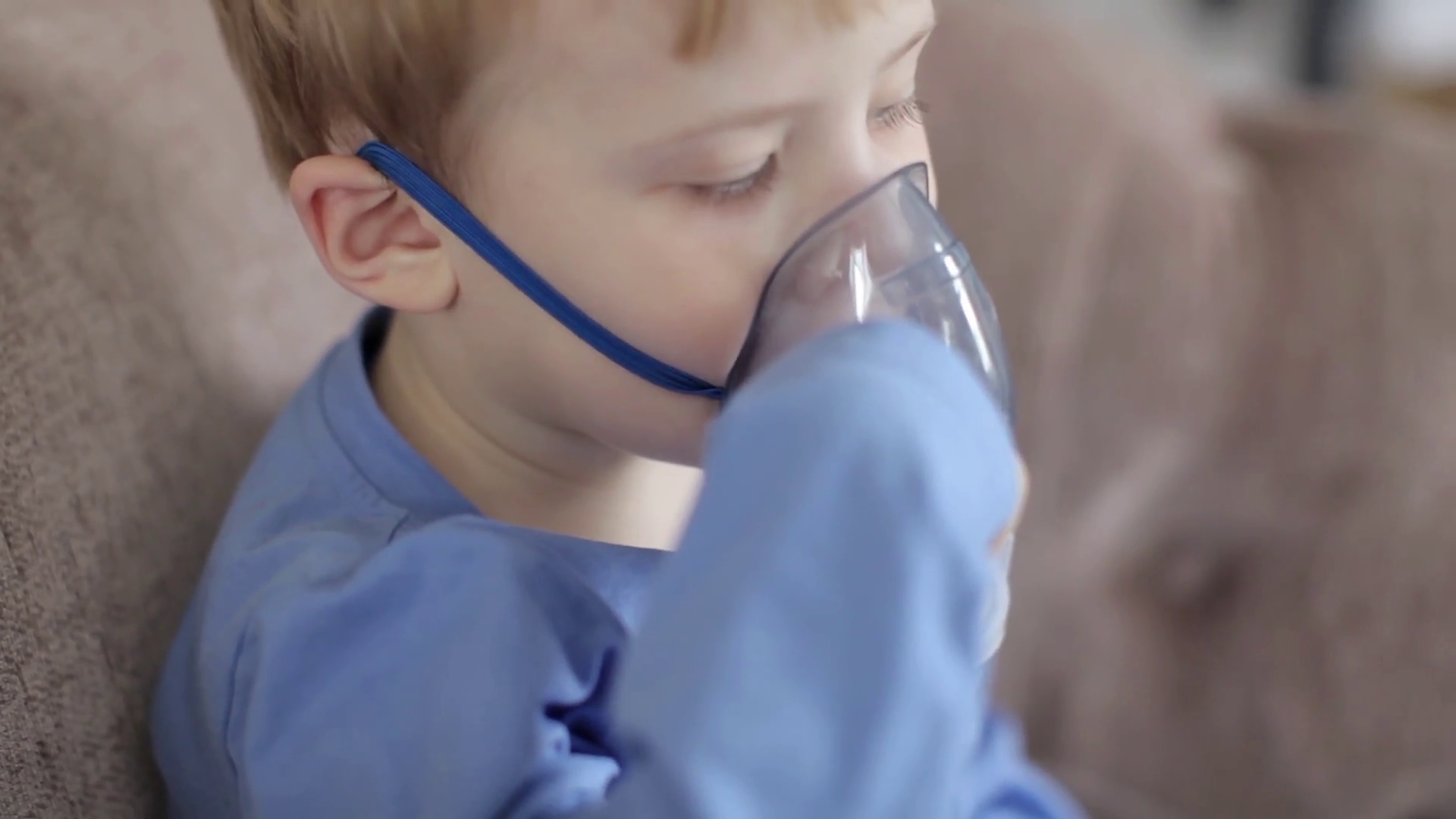Air pollution is known to take a toll on the lungs of even the healthiest adults. So it comes as no surprise that the effects of this pollution on the lungs of children is deemed as a grave situation, full of health hazards including the onset of Chronic Obstructive Pulmonary Disorders and conditions like asthma. Read on to find out more about the link between air pollution and its effect on the lungs of children.
- Children's Lungs: Mostly, all the organs of a child's body are considered delicate and not fully matured until the child reaches a certain age. The main and largest part of the child's lungs will usually grow only after the child has been born - much like the arms and legs. In fact, it is a medically proven fact that about 80% of the tiniest of air sacs grow after the child's birth. These are called the alveoli and they facilitate the transfer of the oxygen into the blood stream with a life sustaining function that is built into our lungs. These alveoli continue to grow until the child becomes an adult.
- Immunity and Infections: Like the lungs of the child, the immunity of the child is also still in its growth phase, and very much unlike the immunity that an adult enjoys. This makes the child more susceptible to infections that are usually carried by air pollution in today's day and age of urban living when myriad pollutants are sent into the air every single day. Also, since children play outdoors more often and spend more time breathing in this air, they are more prone to these infections and lung or respiratory ailments due to this reason. Various studies and tests have shown inflammation in the respiratory passages caused by deposits of carbon dioxide emissions in the lungs of children.
- Symptoms: Usually, the very first symptoms that show that air pollution is affecting the child's lungs can be seen when persistent coughing and wheezing sets in, without any proper reason. Also, when the child faces bronchial infections time and time again, then this points at the hazardous effects of air pollution as well.
- Respiratory problems: Apart from respiratory problems which can lead to asthmatic attacks, hay fever and allergies as well as other COPD ailments, there are other related dangers. These can happen when constant choking and obstruction of oxygen due to pollution become a regular affair. These include strokes and brain damage which can eventually also lead to a higher risk of dementia.
The government and citizens need to ensure that there is a drop in particle air pollution so as to ensure that children do not fall prey to such health problems.
Indoor air pollution is very much real and it can be five times or worse than outdoor air pollution. From everyday consumer products and household habits such as paints, pet allergens to cooking gas can be an additional source of air pollution. So, what now and how do we shield ourselves?
Bornali Dutta, Associate Director Respiratory and Sleep Medicine, Medanta – The Medicity, said: “According to the World Health Organization (WHO) global air pollution database released in Geneva, India has 14 out of the 15 most polluted cities in the world in terms of PM 2.5 concentrations. It said 7 million people die every year because of outdoor and household air pollution…Reports like these suggest that the impact of pollution on human health is fatal. Air pollution has impact on most of the organs and systems of human body. The lung is one of the major sites of interaction with environmental particulates that causes and aggravates many respiratory diseases like COPD, asthma, and lung cancer.
“Air pollutants like particulate matter (PM), ozone (O3), sulphur dioxide (SO2), nitrogen dioxide (NO2), carbon monoxide (CO), and lead (Pb) can affect the lung in numerous ways like inflammation, oxidative stress, and cell cycle death. They have been shown to trigger acute episodes in asthma and COPD, other allergic airway diseases, strongly associated with lung cancer.”
Arvind Chabra, Country Head, Blueair suggests some tips which will help us avoid indoor air pollution:
Say no to scented incense sticks and candles: After reading this you might think twice before lighting up those decorative candles or using agarbattis. Studies suggest incense sticks and scented candles release undesired chemicals that can cause serious health problems like skin allergies and even heightens risk of respiratory cancer
Say yes to some greenery: Yes! Plants are your best friends. They provide fresh oxygen to our lungs and planting a few indoor plants in your home with help you breathe clean and off course it gives that extra punch to your indoor décor. So, go ahead, buy some beautiful indoor plants and give your house a chic look.
Remove carpeting if possible: Those aesthetic carpets and rugs can actually be a source of indoor air pollution. Carpets can capture a lot of pollutants such small dust particles, food which fall on the floor, pet hair, dust mites, pesticides, cockroach allergens and other dirt. These pollutants may become airborne while vacuuming or during renovations. Children are more exposed to these pollutants are they tend to play on the carpet.
Indoor smoking is deadly: Avoid smoking Indoor. It affects not only the smoker but also people around them. While we are all aware about the harmful effects of smoking, it is deadlier indoor. Since there is no space for the smoke to go out so you tend to inhale the same air repeatedly, harming your nostrils and lungs.
Ensure good ventilation: Proper ventilation in your house will prevent air pollutants from affecting you and your family’s health. Not only that, having a proper flow of air inside your home can help you get rid of all the unwanted smells arising from cooking or from carpets. Also, allergens such as dusts, pollen, and other irritants which tends to get trapped inside your house can be removed to a large extent if there is a proper ventilation.
Give away your plastic habits: Plastics are a major cause of air pollution. The by-products of plastics called microplastics are small pieces of plastic between the size of 0.1 micron to 5mm in diameter. These microplastics are immensely harmful to our health. Shockingly microplastics have found its way to our homes also. Their contributors can be simple things like erosion of synthetic carpets, synthetic clothing or cosmetics. Hence it is advisable to use less plastics products at home and switch to a sustainable way of life.
Get an air purifier: Air purifiers are the best way to clean the indoor air. In addition to investing in your health it can prevent microplastics, allergies and impure air from harming you and your dear ones.
Consuming Mediterranean diet rich in antioxidants could reduce the adverse effects of air pollution on health.
A diet which includes antioxidants present in fruits, vegetables, whole grains, legumes, olive oils, fish and poultry over red meat and processed foods, can weaken the adverse effects of exposure to high levels of air pollution, says researchers.
The study showed that people who least adhered to these antioxidant-rich foods had 17 per cent higher risk of cardiovascular disease related deaths for every 10 micrograms per cubic meter increase in long-term average PM2.5 exposure, compared to 5 per cent in those who consumed such diet.
“Given the benefits we found of a diet high in antioxidants, our results are consistent with the hypothesis that particle air pollution caused by fossil fuel combustion adversely affects health by inducing oxidative stress and inflammation,” said George Thurston from Department of Environmental Medicine at the New York University.
The study, presented at the American Thoracic Society 2018 International Conference in San Diego, included data from 548,699 participants for over a period of 17 years. They were linked to estimates of long-term exposure to fine particulate matter (PM2.5), nitrogen dioxide (NO2) and ozone (O3) based on census tract information.
Deaths from all causes increased by 5 per cent for every 10 parts per billion (ppb) increase in long-term average NO2 exposure in those with least consumption of the diet as compared to 2 per cent among the people with higher consumption.
“However the diet did not appear to protect against the harmful effects of long-term exposure to O3…the ozone effect was not significantly blunted by a Mediterranean diet, so ozone apparently affects cardiac health through a different mechanism”, said Thurston.
Long-term exposure to traffic-related pollution may significantly increase the risk of asthma in early childhood, a study has warned. The findings, published in the Journal of Allergy and Clinical Immunology, showed that living close to a major road was linked to childhood asthma at all ages examined. “Children living less than 100 metres from a major road had nearly three times the odds of current asthma – children who either experience asthma symptoms or use asthma medications daily – by ages seven to 10, compared with children living more than 400 metres away from a major road,” said study co-author Mary Rice from the Beth Israel Deaconess Medical Center (BIDMC) in Boston, US.
For the study, the researchers analysed data from 1,522 Boston-area children born between 1999 and 2002. The researchers used mapping technologies to determine the distance between each child’s home address and the nearest major roadway. They also linked home addresses to census data and satellite-derived atmospheric data to calculate each participant’s daily exposure to fine particulate matter (PM) — tiny particles suspended in the air that when inhaled deposit in the terminal sacs of the lung.
Fine PM originates from fuel combustion, including traffic, power plants, and other pollution sources, the researcher said. The research team also examined children’s daily exposure to soot, a component of fine PM also known as black carbon. The researchers found that traffic-related pollutants appeared to increase asthma risk in childhood. “Lifetime exposure to black carbon and fine PM were also linked to the asthma in early childhood (ages three to five years), but in mid-childhood (ages seven to 10 years), these pollutants were associated with asthma only among girls,” the researcher noted.












